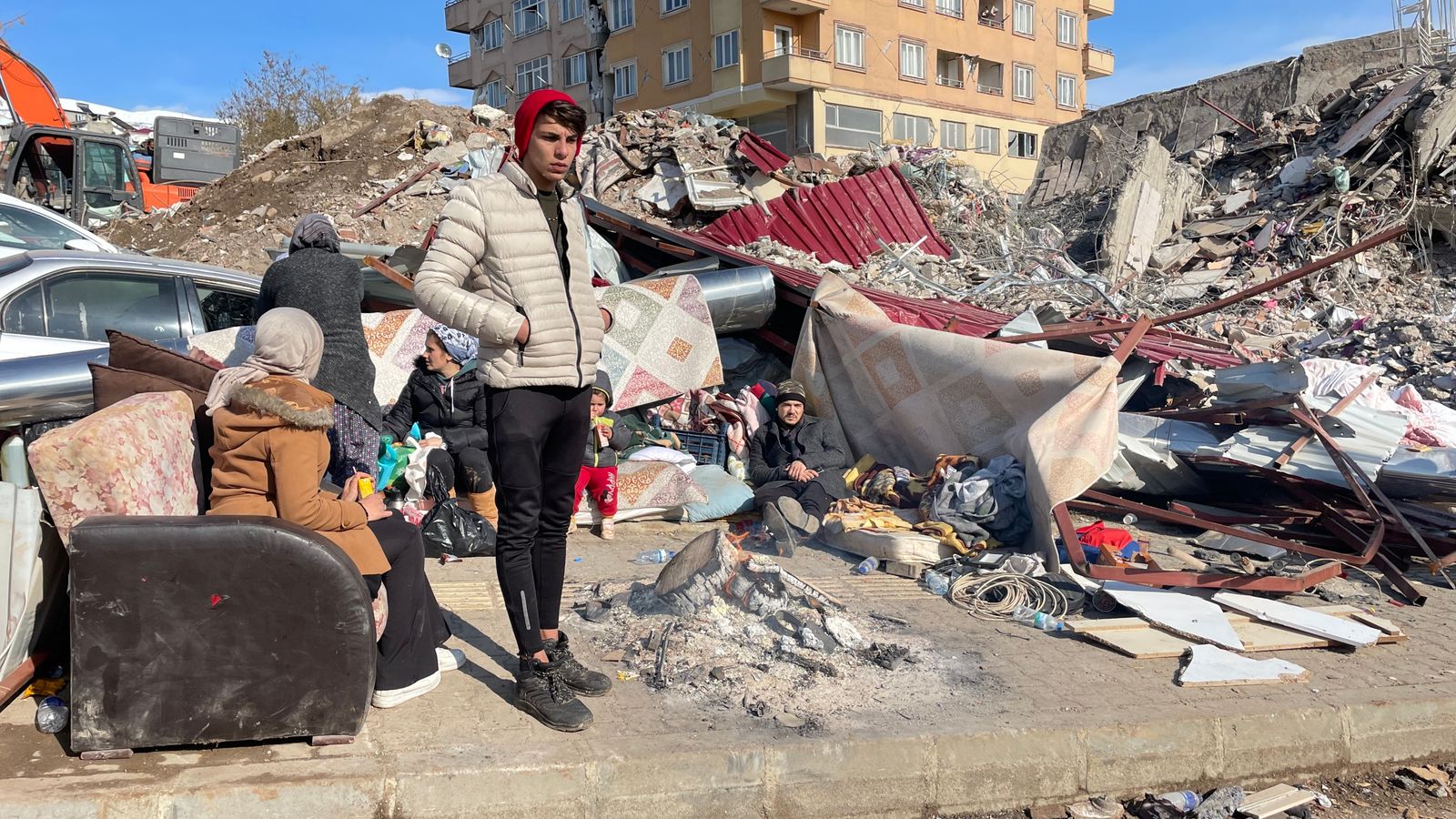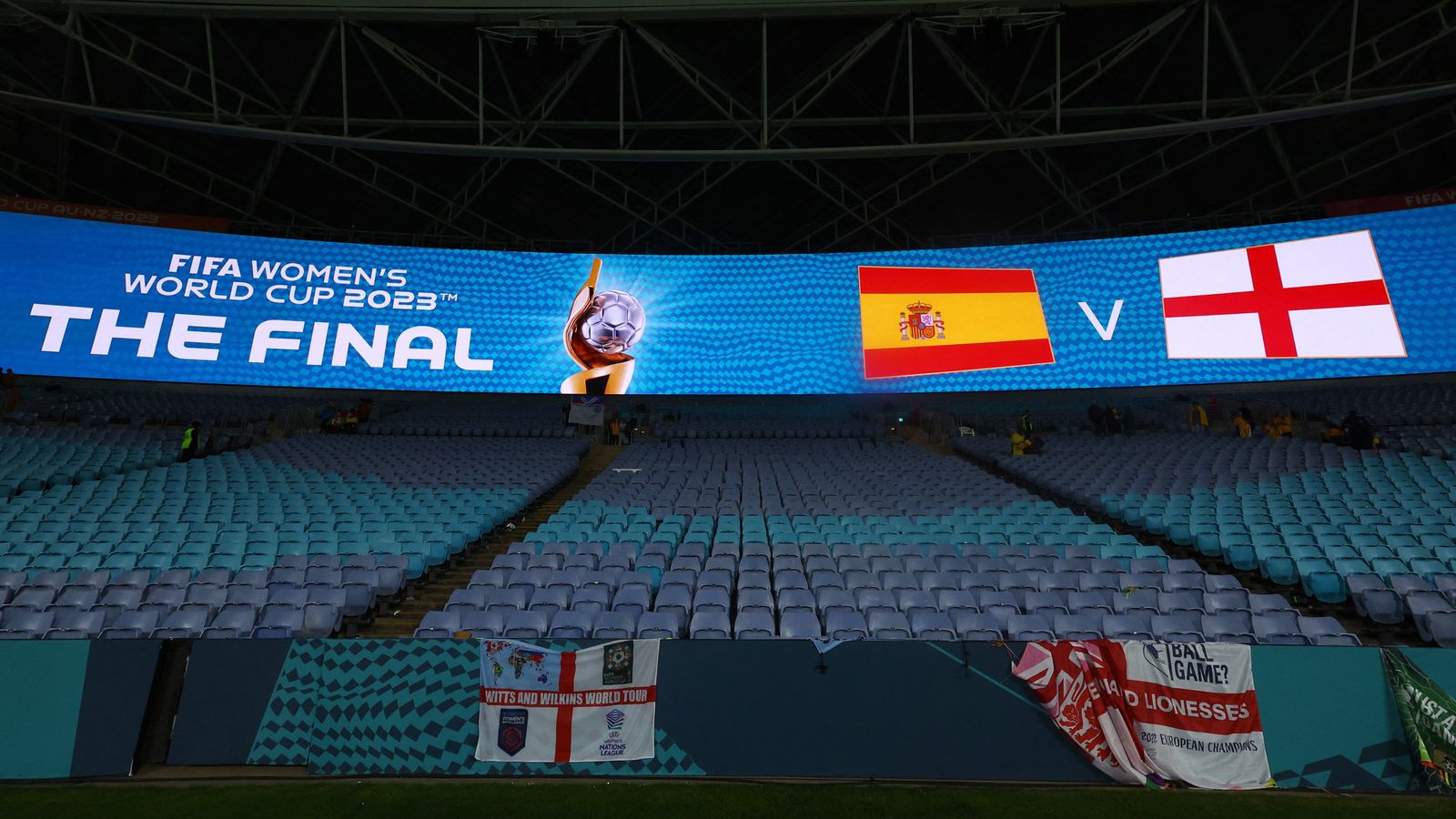Turkey-Syria earthquake: ‘The world has collapsed on its head’: Searches for signs of life in city at the epicentre

The heart of this disaster lies at the end of the highway which leads to Kahramanmaras, a bustling city of a million people, perched up in the mountains of central Turkey.
The setting is spectacular but this community also sits along the East Anatolian Fault. When two major earthquakes ruptured the surface on Monday, the city’s residents found themselves far too close to the epicentres of both.
As we made our way into the city, we saw tens of thousands in plastic tents or cooking outside over open fires. People clung to blankets to keep themselves warm as a bitter wind whipped through the streets.
‘Critical’ 72-hour rescue window passes – latest updates
Yet these are the survivors, those who have managed to keep themselves alive.
Many of their neighbours have not.
We went to an area of the city called the Abrar district, which hosted a series of newly built, multi-storey apartment buildings.
Nine residential blocks of up to 11 storeys had been ripped from their foundations, their occupants buried in disorderly tombs.
Small bands of volunteers clambered over the concrete slabs looking for signs of life, but the bodies of some of those who have lost their lives were visible between the cracks. We saw a woman’s foot poking through the rubble and the head of a man between the compressed floors of a building they called ‘Block A’.
Read more:
Rescuers face mind-blowing devastation
How you can help save lives
Is more aid being sent to Turkey than Syria?
Searching for survivors
We heard a tortured cry from the top of a great pile of rubble as the body of a girl was extracted from the slabs and shards of metal.
It came from a man called Juma Aktop, who lived with his family on the 11th floor. He was staring at his 12-year-old daughter, Leyla, who was wrapped in the blanket which had laid on her bed.
Her uncle, Mustafa, carried her down the slope, calling out her name as he scrambled down.
“Leyla,” he cried, “Leyla.”
“Have you checked to see if she is alive or not? Do you know if she is alive?”
Mustafa collapsed at the bottom of the mountain of debris and a volunteer checked the body.
“Unfortunately not,” she said.
Her father said she was a wonderful girl, describing her as helpful, cheerful and kind.
‘The world has collapsed on its head’
“You must have been looking for her for days?” I asked.
“Yes I was,” said Juma Aktop. “How do I feel? The world has collapsed on its head, that’s all I can say. All those in the family who have survived now live like we are dead.”
The Turkish government says it doing everything it can and describes the rescue operation as “improving on a daily basis”.
But in the Abrar district people were angry and upset. The first heavy machinery, like excavators and cranes, had only just arrived.
Read more:
Huge queues in freezing villages – with aid yet to arrive
Trapped boy given water by rescue workers
Man travels from Wales – only to find family buried
Women are crying and destruction is everywhere
Hope turns to despair
One man stopped and pointed at the camera.
“Where are they? Where are they? There are no vehicles, no electricity, there’s nothing here, no generators, people will die from the cold and hunger.”
He said two members of his family were buried in the rubble and the government had done nothing to help. He took out his phone and waved it.
“There is no connection, no signal, should we drop our phones because we cannot communicate with them, why? Where are they, where are they?”
Please use Chrome browser for a more accessible video player
1:05
Children rescued after nearly three days
Some hold out for something like a miracle, the emergence of survivors from under the rubble.
But hope is turning into despair in a district now dominated by great piles of debris.
There will be a special programme called Disaster Zone: The Turkey-Syria Earthquake on Sky News on Friday evening at 9.30pm
